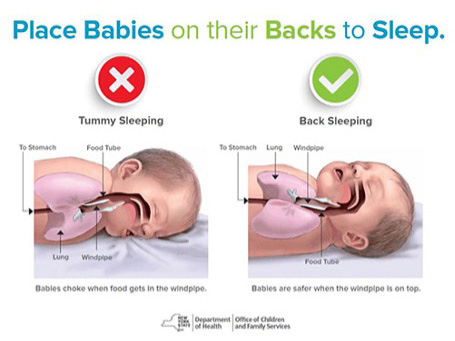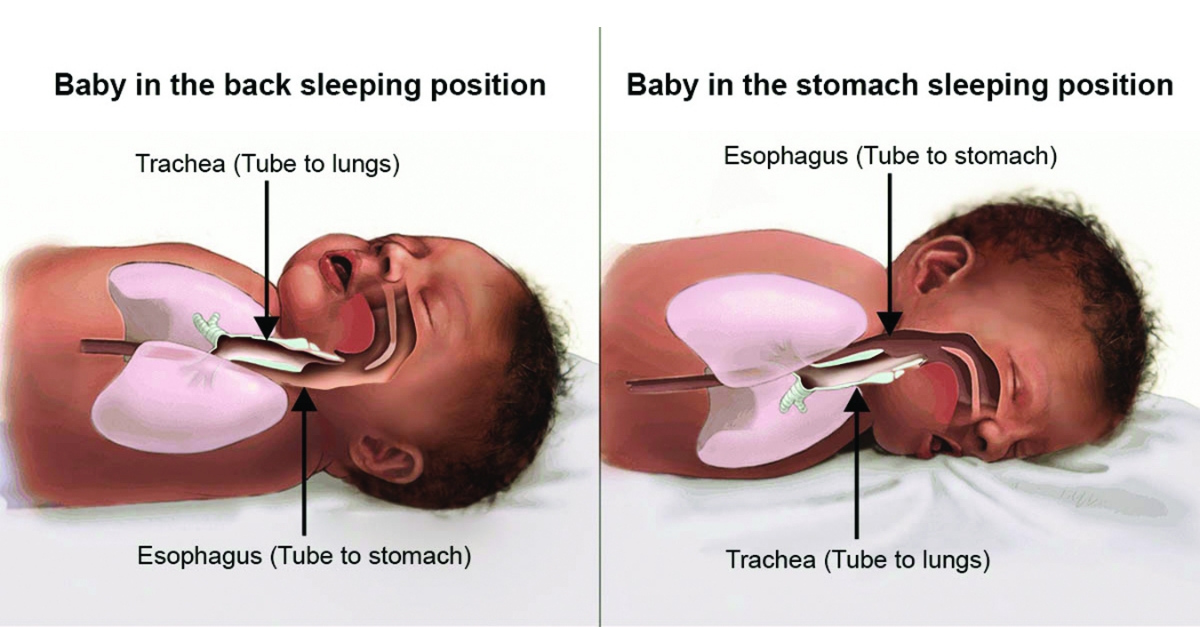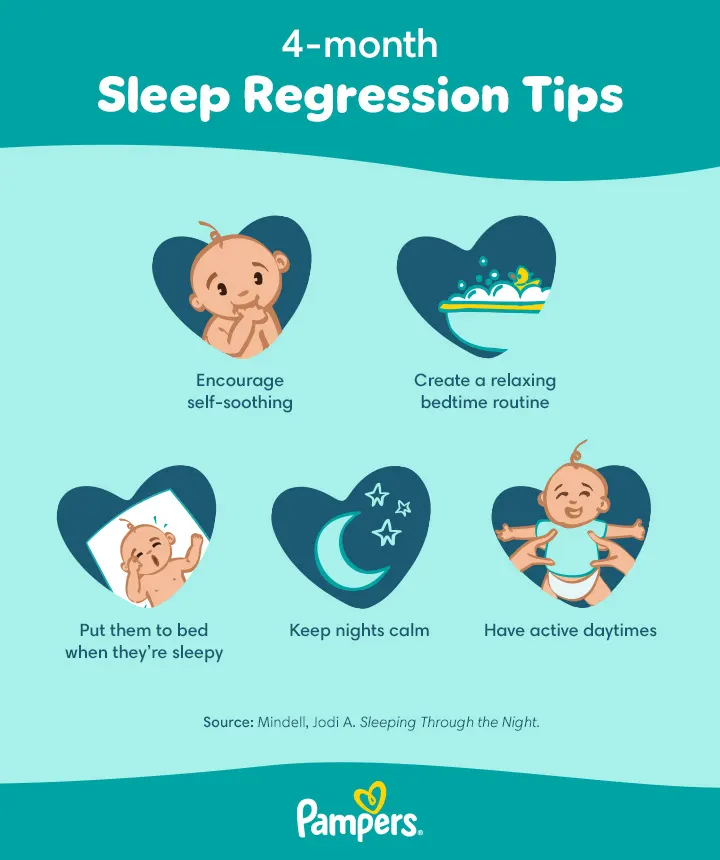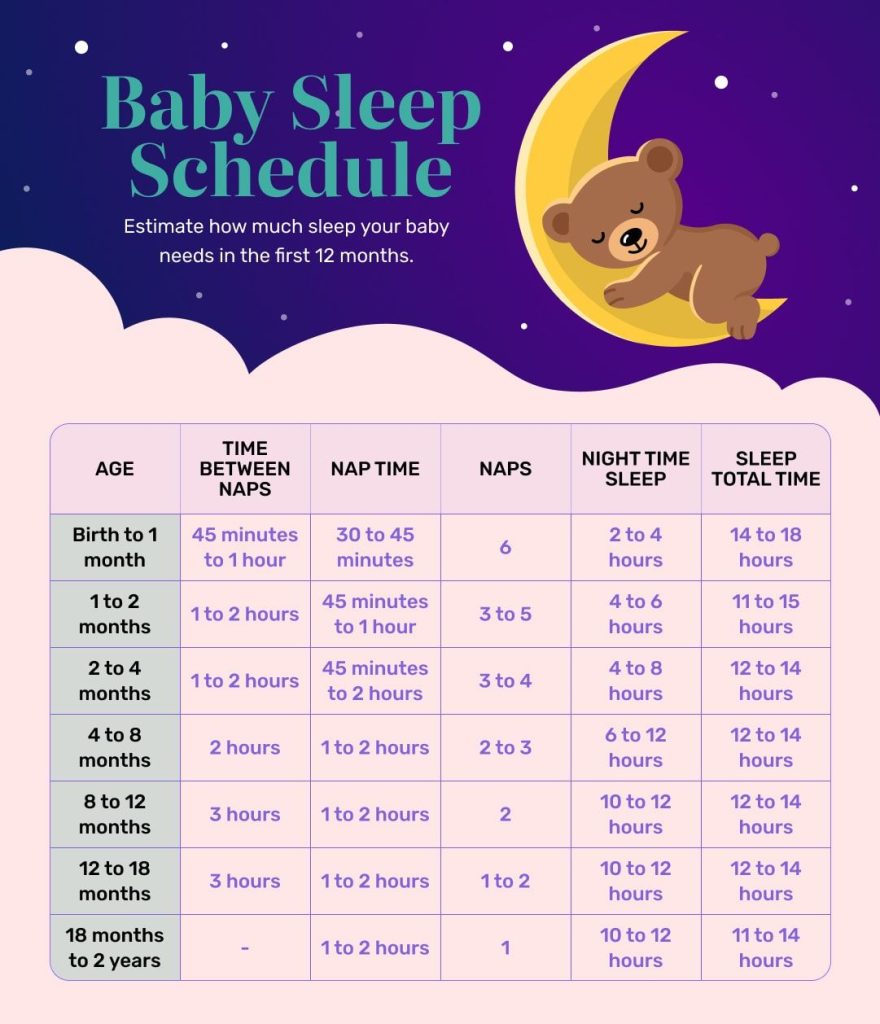Babies should not sleep on their stomachs. This increases the risk of sudden infant death syndrome (SIDS).
Parents often wonder about the safest sleep position for their babies. The American Academy of Pediatrics recommends placing infants on their backs to sleep. This position significantly reduces the risk of SIDS, which is a leading cause of death in infants under one year old.
Ensuring a safe sleep environment is crucial. A firm mattress, a fitted sheet, and a clutter-free crib are essential. Avoid using soft bedding, pillows, or stuffed animals in the crib. These precautions help create a safer sleeping environment for your baby. Always consult your pediatrician for personalized advice and guidelines to ensure your baby’s safety and well-being.
Introduction To Infant Sleep Positions
Parents often wonder about the best sleep positions for their babies. Ensuring your baby sleeps safely is crucial. Understanding different sleep positions can help you make informed decisions. Let’s explore common sleep positions and historical changes in recommendations.
Common Sleep Positions
Babies sleep in various positions. Each has its own benefits and risks. Here are the most common ones:
- Back Sleeping: Recommended by pediatricians for safety.
- Side Sleeping: Less common but sometimes chosen by parents.
- Stomach Sleeping: Often debated due to safety concerns.
Historical Changes In Recommendations
Sleep recommendations for babies have changed over the years. In the past, stomach sleeping was popular. This changed as research showed higher risks of SIDS. Today, back sleeping is strongly advised.
Here’s a quick look at the historical shifts:
| Time Period | Recommended Position | Reason |
|---|---|---|
| 1960s-1970s | Stomach Sleeping | Believed to reduce choking |
| 1980s-1990s | Side Sleeping | Seen as a compromise |
| 2000s-Present | Back Sleeping | Reduces risk of SIDS |
Risks Of Stomach Sleeping
Stomach sleeping might seem comfortable for babies. But it poses serious risks. Parents need to understand these risks to keep their babies safe.
Sudden Infant Death Syndrome (sids)
Sudden Infant Death Syndrome (SIDS) is a tragic event. It happens when a baby dies suddenly during sleep. The exact cause is unknown. But stomach sleeping increases the risk. Babies who sleep on their stomachs are more likely to overheat. They might also breathe in their own exhaled air. This can lead to a lack of oxygen.
Breathing Difficulties
Babies have small airways. Stomach sleeping can block these airways. This makes it hard for them to breathe. Breathing difficulties can cause serious problems. Babies might not get enough oxygen. This can affect their growth and development.
| Risk | Description |
|---|---|
| SIDS | Increased risk due to overheating and rebreathing exhaled air. |
| Breathing Difficulties | Blocked airways can lead to low oxygen levels. |
Parents should always put babies on their backs to sleep. This simple step can reduce the risks significantly.
Benefits Of Back Sleeping
Understanding the benefits of back sleeping for babies is crucial. This practice can enhance their safety and health. Let’s explore the key advantages of back sleeping.
Reduced Sids Risk
Placing babies on their backs to sleep significantly reduces the risk of Sudden Infant Death Syndrome (SIDS). Studies show that this position is the safest for infants during sleep. The American Academy of Pediatrics recommends back sleeping as the best practice. This advice is backed by extensive research and data.
Better Breathing
Back sleeping helps babies breathe more easily. This position keeps their airways open and clear. Babies sleeping on their backs face fewer respiratory issues. Parents can feel more at ease, knowing their baby is breathing well.
| Benefits of Back Sleeping | Description |
|---|---|
| Reduced SIDS Risk | Lower chances of Sudden Infant Death Syndrome. |
| Better Breathing | Improves airway clearance and reduces respiratory problems. |
- Reduced SIDS Risk: Lower chances of Sudden Infant Death Syndrome.
- Better Breathing: Improves airway clearance and reduces respiratory problems.
- Reduced SIDS Risk: Lower chances of Sudden Infant Death Syndrome.
- Better Breathing: Improves airway clearance and reduces respiratory problems.
When Is Stomach Sleeping Safe?
As a parent, you may wonder if your baby can sleep on their stomach. Understanding when it is safe for them to do so is crucial. Various factors play a role in determining the safety of stomach sleeping for your baby. Let’s explore these factors.
Age Considerations
Babies under 12 months should not sleep on their stomach. This is due to a higher risk of Sudden Infant Death Syndrome (SIDS). The American Academy of Pediatrics advises placing babies on their backs to sleep until they are one year old.
After 12 months, the risk of SIDS decreases significantly. At this age, stomach sleeping becomes safer. Always consult your pediatrician before making changes to your baby’s sleep position.
Developmental Milestones
Reaching certain developmental milestones can indicate readiness for stomach sleeping. These milestones include the ability to roll over both ways and lift their head.
- Rolling Over: Babies usually start rolling over around 4-6 months. This skill helps them change positions if they need to breathe easier.
- Head Control: By 4 months, many babies can lift their heads. Good head control reduces the risk of suffocation during stomach sleeping.
Keep in mind that each baby develops at their own pace. Monitoring your baby’s progress can help determine when they are ready for stomach sleeping.
| Age | Sleeping Position |
|---|---|
| 0-12 months | Back |
| 12 months and older | Stomach (if they can roll over and have good head control) |
Ensuring that your baby meets these developmental milestones is key to safe stomach sleeping.
Creating A Safe Sleep Environment
Ensuring your baby sleeps safely is every parent’s priority. The way you set up the sleep environment can greatly impact your baby’s safety. Here are essential tips for creating a safe sleep environment.
Choosing The Right Crib
Selecting the right crib is crucial. The crib should meet current safety standards and be free from any defects. Here are some key points to consider:
- The crib slats should be no more than 2 3/8 inches apart.
- Ensure the crib has a firm mattress that fits snugly.
- Check for any loose or missing hardware.
- Avoid drop-side cribs as they are not safe.
A well-chosen crib provides a secure space for your baby to sleep.
Appropriate Bedding
Using the right bedding is essential for safe sleep. Your baby’s crib should have minimal items. Follow these guidelines for appropriate bedding:
- Use a fitted sheet designed for the crib’s mattress.
- Avoid using blankets, quilts, or pillows.
- Consider using a sleep sack or wearable blanket.
- Ensure the bedding is made of breathable materials.
Proper bedding reduces the risk of suffocation and keeps your baby comfortable.
| Item | Safe Use |
|---|---|
| Crib | Firm mattress, no drop-side, close slats |
| Bedding | Fitted sheet, no loose items |
| Sleep Sack | Alternative to blankets |
Creating a safe sleep environment involves careful planning. By choosing the right crib and appropriate bedding, you can ensure your baby sleeps soundly and safely.

Credit: health.ucdavis.edu
Monitoring Your Baby’s Sleep
Ensuring your baby sleeps safely is essential. Monitoring their sleep is a crucial part of this. Understanding how to do so effectively can give parents peace of mind.
Using Baby Monitors
Baby monitors are valuable tools. They help you keep an eye on your baby. There are various types of baby monitors available:
| Type | Features |
|---|---|
| Audio Monitors | Transmit sound, alerting you to noises. |
| Video Monitors | Show live video of your baby’s crib. |
| Movement Monitors | Track your baby’s movements. |
Choose a monitor that suits your needs. Ensure it has a good range and clear reception. Some monitors offer night vision and temperature sensors.
Recognizing Sleep Patterns
Understanding your baby’s sleep patterns is important. Babies have different sleep cycles than adults. They spend more time in light sleep.
Here are common sleep patterns for babies:
- Newborns sleep 16-17 hours a day.
- Three-month-olds sleep 15 hours a day.
- Six-month-olds sleep 14 hours a day.
Keep a sleep diary to track these patterns. Note the times your baby sleeps and wakes up. This will help you recognize any changes in their routine.
Transitioning Sleep Positions
Understanding the importance of sleep positions for babies is crucial. Transitioning your baby from back sleeping to other positions can be delicate. This section will guide you through the process.
Gradual Changes
Sudden changes in sleep positions can be unsettling for babies. Gradual transitions help them adjust better. Here are some steps to make the shift easier:
- Start by placing your baby on their side during nap time.
- Monitor their comfort and adjust as needed.
- Gradually increase the time they spend on their side.
- Introduce short periods of tummy time during the day.
Supervised Tummy Time
Supervised tummy time is essential for your baby’s development. It helps build neck and shoulder muscles. Follow these tips for safe tummy time:
- Always stay close and keep an eye on your baby.
- Start with 2-3 minutes of tummy time several times a day.
- Increase the duration gradually as your baby gets stronger.
- Use a soft blanket or mat for comfort.
Below is a table summarizing the key points for transitioning sleep positions:
| Step | Description |
|---|---|
| 1 | Start with side sleeping during naps. |
| 2 | Gradually increase side sleeping time. |
| 3 | Introduce short, supervised tummy time sessions. |
| 4 | Increase tummy time duration as the baby grows. |
Following these steps ensures a smooth transition. Your baby will gradually adjust to new sleep positions. Remember, supervision is key for safety.

Credit: www.toplinemd.com
Parental Tips And Support
Navigating the world of infant sleep can be challenging. Parents often worry about their baby’s safety, especially when it comes to sleep positions. Knowing where to find tips and support is crucial for peace of mind. Below are some practical ways to seek advice and connect with other parents.
Seeking Advice From Pediatricians
Always consult with your pediatrician about your baby’s sleep. Pediatricians can provide personalized guidance based on your baby’s health. They may have suggestions tailored to your baby’s needs.
Consider asking your pediatrician the following questions:
- Is it safe for my baby to sleep on their stomach?
- What are the risks associated with stomach sleeping?
- Are there specific conditions that allow stomach sleeping?
Taking notes during your pediatrician visit helps retain crucial information. Keep a record of all advice given for future reference.
Connecting With Parenting Groups
Joining parenting groups offers emotional support and practical advice. Parents share their experiences and tips about infant sleep.
Look for online communities or local groups. Facebook and Reddit have many parenting groups. These platforms enable parents to ask questions and share advice.
Here are some benefits of joining parenting groups:
- Access to a variety of parenting experiences
- Emotional support during challenging times
- Practical tips for baby sleep and other concerns
Make sure to verify any advice with your pediatrician. It ensures you follow safe and accurate practices.
| Platform | Type | Benefits |
|---|---|---|
| Online Group | Variety of experiences, easy access | |
| Online Forum | Anonymous support, diverse advice | |
| Local Meetups | In-person | Personal connections, face-to-face support |
Connecting with other parents and seeking professional advice can ease your worries. Always prioritize your baby’s safety by following expert recommendations.
Conclusion And Key Takeaways
Ensuring your baby sleeps safely is a top priority for any parent. Understanding the risks and recommendations is essential. Let’s summarize the key points to remember for your baby’s safe sleep.
Summarizing Safety Tips
- Always place babies on their back to sleep
- Keep the crib free of soft toys, pillows, and blankets
- Use a firm sleep surface, like a mattress with a fitted sheet
- Maintain a smoke-free environment around the baby
- Avoid overheating; dress the baby in light sleep clothing
Encouraging Safe Sleep Practices
Adopting safe sleep habits is crucial for your baby’s health. Here are some practices to encourage safe sleep:
- Create a consistent bedtime routine
- Ensure the baby sleeps in the same room as the parents for the first year
- Offer a pacifier at nap time and bedtime
- Breastfeed your baby if possible, as it reduces the risk of SIDS
- Ensure regular prenatal care during pregnancy
Following these tips and practices will help keep your baby safe and healthy. Prioritizing safe sleep is an important step in their early development.

Credit: safetosleep.nichd.nih.gov
Frequently Asked Questions
What Age Can Babies Sleep On Their Stomach?
Babies can sleep on their stomachs around 12 months old. Always consult your pediatrician for personalized advice. Safe sleep practices are crucial.
Is It Okay If Baby Rolls Onto Stomach When Sleeping?
Yes, it’s okay if baby rolls onto the stomach while sleeping. Ensure the sleep area is safe and free of hazards.
What If My Baby Falls Asleep On Her Stomach?
Place your baby on their back if they fall asleep on their stomach. Sleeping on the back reduces SIDS risk.
Is It Ok For Baby To Sleep On Tummy On My Chest?
It’s generally safe for short naps under supervision. Avoid it during deep sleep to reduce SIDS risk.
Is It Safe For Babies To Sleep On Their Stomach?
No, babies should sleep on their backs to reduce the risk of SIDS.
Conclusion
Ensuring your baby sleeps safely is crucial. Placing them on their back reduces the risk of SIDS. Always use a firm mattress and avoid soft bedding. Consult your pediatrician for personalized advice. Prioritize your baby’s safety and well-being during sleep.
Following these guidelines can help your baby sleep soundly and safely.


